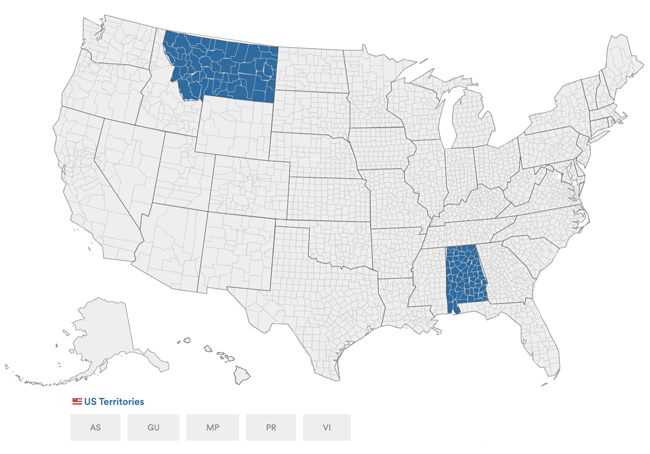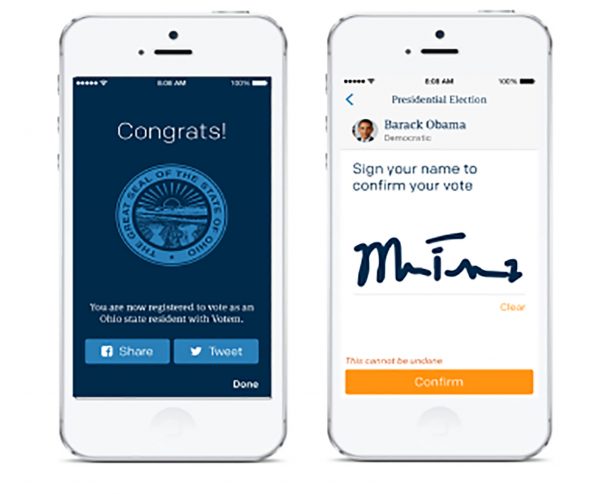
Votem
CastIron Voting Platform
Make / Model: Votem CastIron Voting Platform
Equipment Type: Remote Ballot Marking System or Internet Voting System
Back to Voting Equipment Database
Overview
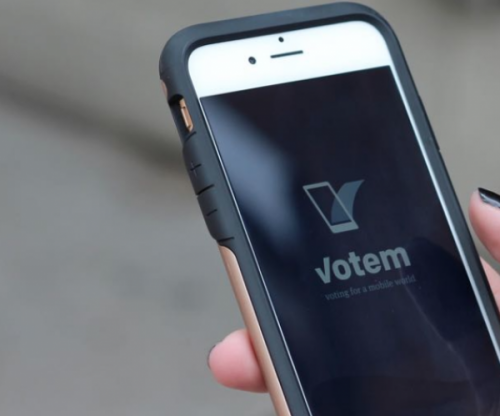
Votem’s CastIron platform supports remote ballot marking and the electronic return of a voted ballot (internet voting). In early 2016, Votem acquired a mobile voting system — the software platform, related mobile apps, customers, and contracts — from Michigan-based vendor Konnech. This acquisition meant Votem became the online registration and ballot marking systems vendor for Uniformed and Overseas Citizens Absentee Voting Act (UOCAVA) voters for the State of Montana and Washington D.C., as well as voters in the 2016 primary and general elections (and 2017 special elections) in Detroit. In 2018, Votem acquired Everyone Counts, which was working on online voter registration, online voting, mobile blockchain voting, and ballot duplication software. As part of this acquisition, Votem acquired the Everyone Counts contract with the State of Alabama to provide an online voting platform for UOCAVA voters.
The current platform, CastIron, is used by Montana UOCAVA voters and voters with disabilities to electronically receive and mark their ballots, and is used by Alabama UOCAVA voters to electronically receive, mark, and return their ballots (internet voting). In early 2019, Votem laid off a substantial number of employees and sold its voter registration business acquired with Everyone Counts to KNOWiNK. As of 2020, the company was still operational and servicing clients, and working on Proof of Vote, an end-to-end voter verifiable (E2E) online voting protocol that uses blockchain.
Voting Process
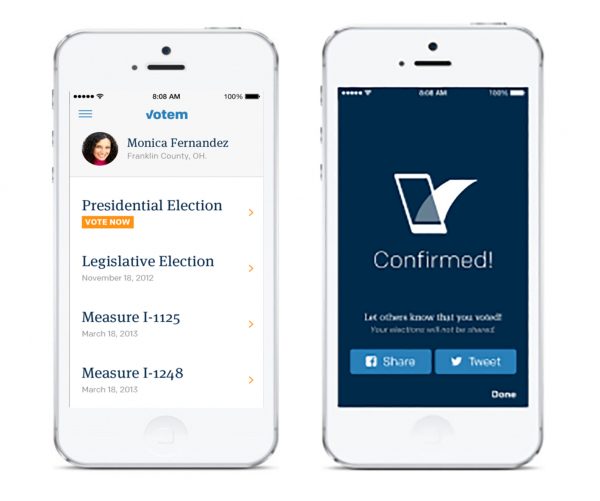
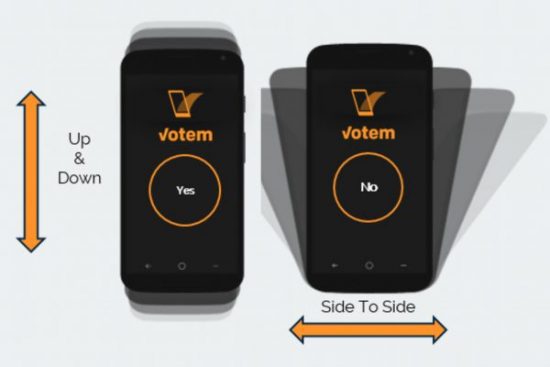
Voters access Votem’s CastIron platform from their computer, tablet, or smartphone. If using a computer, the voter accesses their ballot in a web browser and can use a screen reader, if needed. An eligible voter first fills out an application to request a PIN. After the voter receives their PIN, they return to the website and select “Sign in and Vote.” The voter receives instructions and selects “OK, Mark Ballot” to continue to the ballot marking screen. The voter next inputs their email address and PIN and selects “Submit.” The voter then proceeds to either mark their ballot using the ballot marking system or prints their ballot and marks it by hand.
To mark a ballot by hand, the voter selects “Continue to the Next Step” from the ballot marking screen, then, from the download page, the voter selects their transmission method — email, fax, or postal mail, depending on the jurisdiction’s options — and prints their ballot packet.
To mark a ballot using the server-side remote ballot marking system, the voter selects the oval to the left of the candidate of their choice. The ballot looks similar to a traditional paper ballot. The voter is not required to select a candidate for every contest or a choice for every ballot initiative. After the voter has reviewed their choices and is satisfied with their ballot, the voter either prints their ballot to mail or drop off, or, if allowed in their state, submits their ballot electronically (internet voting).
A voter who is registered in a state that prohibits the electronic return of a voted ballot (internet voting) may return to the system and mark a new ballot, if needed, using their email address and PIN. The system does not save their previously marked ballot and the voter must mark a new ballot. The voter can send only one voted ballot to their county.
A voter using the CastIron mobile application must download the app to their smartphone or tablet. Votem’s mobile app has accessible features, including the option to listen to a list of candidates and shake the device to select a candidate. The app can be configured to enable text-to-speech, to speak slowly, and to recognize English, Spanish, or Chinese. Votem’s CastIron mobile app is compliant with the ADA, WCAG 2.0, and the Rehabilitation Act: Section 504. The voter can also choose to receive election alerts and research candidates and ballot issues.
When making their selections on the CastIron mobile app, a voter will be notified of attempted overvotes. The voter can have their selections read back to them at any time while marking their ballot. After a voter has completed their ballot, the app can read back the voter’s selections and will alert the voter of undervotes. If allowed in the voter’s state, the voter can sign their completed ballot using their phone or tablet’s touchscreen and submit the ballot from their device (internet voting).
Videos
Votem’s Mobile Voting Platform (MVP)
Votem To Use Blockchain To Record Immutable Voting Records
References
Security Concerns
Electronic Return of Voted Ballot (Internet Voting) Supported
Every internet-connected system or device, including a remote ballot marking system that allows for the electronic return of voted ballots (internet voting), is vulnerable to attack. Internet voting systems do not provide a voter-verified paper record, which is the most reliable way to recover from an attack and check that the results were not tampered with. If a hacker interferes with a voter’s selections after they have submitted a ballot, the voter has no way to review their actual printed ballots. There is also currently no trustworthy way for a voter to ensure that somebody else did not vote in their name. Read more about Verified Voting’s stance on internet voting here.
Limitations of Blockchain
According to the authors of the Trail of Bits security analysis of the Voatz mobile app — not Votem’s app — storing data on a blockchain maintains an auditable record, but comes at the expense of privacy and increased possibility of attacks. Because voters do not connect directly to the blockchain, they cannot independently verify that their votes were properly recorded. If hackers make their way into the blockchain, they could do so undetected and alter or expose votes.
A blockchain online voting platform does not prevent an attacker from introducing malware onto a voter’s device. Malware could allow an attacker to witness voter’s selections and manipulate their votes. Malware can allow a hacker to alter a voter’s ballot before it enters the blockchain, which would then send incorrect selections to elections officials and the voter would not be aware.
Manufacturer Profile
Votem was started in 2014 by Pete Martin, who is determined to have 1 billion people around the world vote on the Votem platform using their mobile devices by 2025. In early 2016, Votem acquired a mobile voting system from Konnech. To support its development of a remote voting system, Votem also worked with private organizations like the Rock and Roll Hall of Fame and the Ohio State Bar Association. In 2018, Votem acquired Everyone Counts, which had been providing online voter registration, online voting, mobile blockchain voting and ballot duplication software. In early 2019, Votem laid off a substantial number of employees and sold its voter registration business acquired with Everyone Counts to KNOWiNK. As of 2020, the company is still operational and servicing clients, and working on blockchain-based voting technology.
